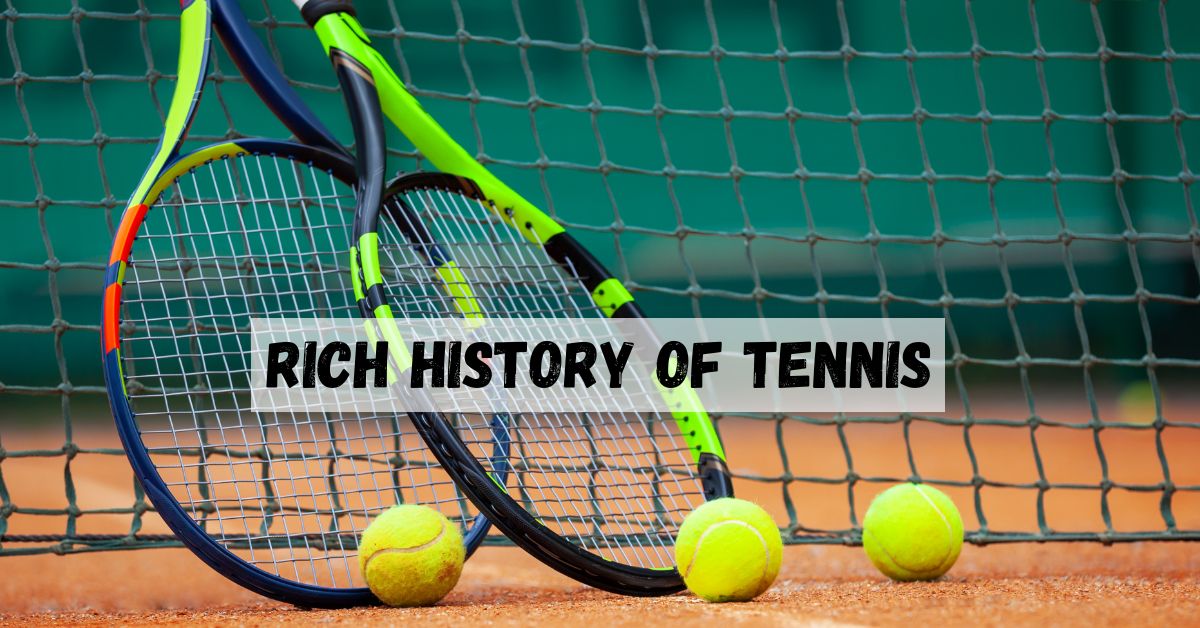From the courtyards of French monasteries to the pristine lawns of Wimbledon, tennis has evolved immensely over the years. The sport, with its grace and finesse, has embedded itself in the fabric of global culture, offering not just athletic brilliance but also moments that have transcended boundaries and time. Let’s journey back and uncover the rich tapestry of tennis’s history.
Birth of Tennis: The Early Beginnings
The genesis of tennis traces back to the 12th century in France. Here, monks played a crude handball against their monastery walls or over a rope strung across a courtyard. This game was known as ‘jeu de paume’ or ‘game of the palm.’ With time, gloves replaced bare hands, which further led to the use of paddles and eventually rackets by the 16th century.

The Evolution of Lawn Tennis
Tennis underwent a significant transformation in England during the late 19th century. Major Walter Clopton Wingfield patented in 1874 what he called “Sphairistikè,” a version of the old French game. Wingfield’s game was played on an hourglass-shaped court, marking the shift from indoor courts to lawns—hence the term ‘lawn tennis.’
Grand Slam Beginnings and Global Expansion
The four major tournaments, known collectively as the Grand Slams, soon found their footing. Wimbledon was the first, established in 1877, followed by the US Open in 1881, the French Open in 1891, and the Australian Open in 1905. These events played a monumental role in elevating tennis’s status, making it a global spectacle.
The Era of Change: Open Era and Beyond
Tennis witnessed a radical transformation with the advent of the Open Era in 1968. Before this, only amateurs were allowed to compete in Grand Slams. The Open Era heralded the acceptance of professional players, elevating the quality of the game and drawing unprecedented global viewership.
Tennis in the Modern Age
The 20th and 21st centuries saw tennis stars rising from every corner of the globe, marking periods of intense rivalries, unmatched athleticism, and ground-breaking records. Players such as Rod Laver, Billie Jean King, Björn Borg, Serena Williams, and Roger Federer didn’t just win matches; they crafted stories that resonated with millions.
Tennis Through the Ages: A Brief Statistic Overview
| Era | Significant Evolution | Notable Players |
|---|---|---|
| 12th – 16th Century | Introduction of ‘jeu de paume’ | Monastic communities |
| 19th Century | Birth of lawn tennis, Establishment of Wimbledon | Spencer Gore (First Wimbledon Champion) |
| Early 20th Century | Inception of Australian & French Opens | Suzanne Lenglen, Bill Tilden |
| Mid 20th Century | Rise of Professional Circuits, Precursor to Open Era | Rod Laver, Margaret Court |
| Late 20th – 21st Century | Open Era, Technological advances in equipment | Pete Sampras, Serena Williams, Rafael Nadal |
The Last Serve: Reflecting on the Legacy
Tennis, with its storied history, stands not just as a testament to athletic prowess but as a narrative of evolution, resistance, and revolution. It’s a sport that has seamlessly interwoven moments of human endeavor, perseverance, and brilliance into a chronicle that every generation looks back upon with admiration. As we revel in the present-day glories of tennis, it’s essential to appreciate the rich heritage that has set the stage for today’s legends.
Thus, the sport serves not merely as a competition of athletic ability but also as a storybook, each chapter adding new layers of complexity and wonder. It continues to captivate, inspire, and challenge, ensuring that its legacy will endure for generations to come.
Read More: A Pictorial History of Hockey Moments and Milestones
